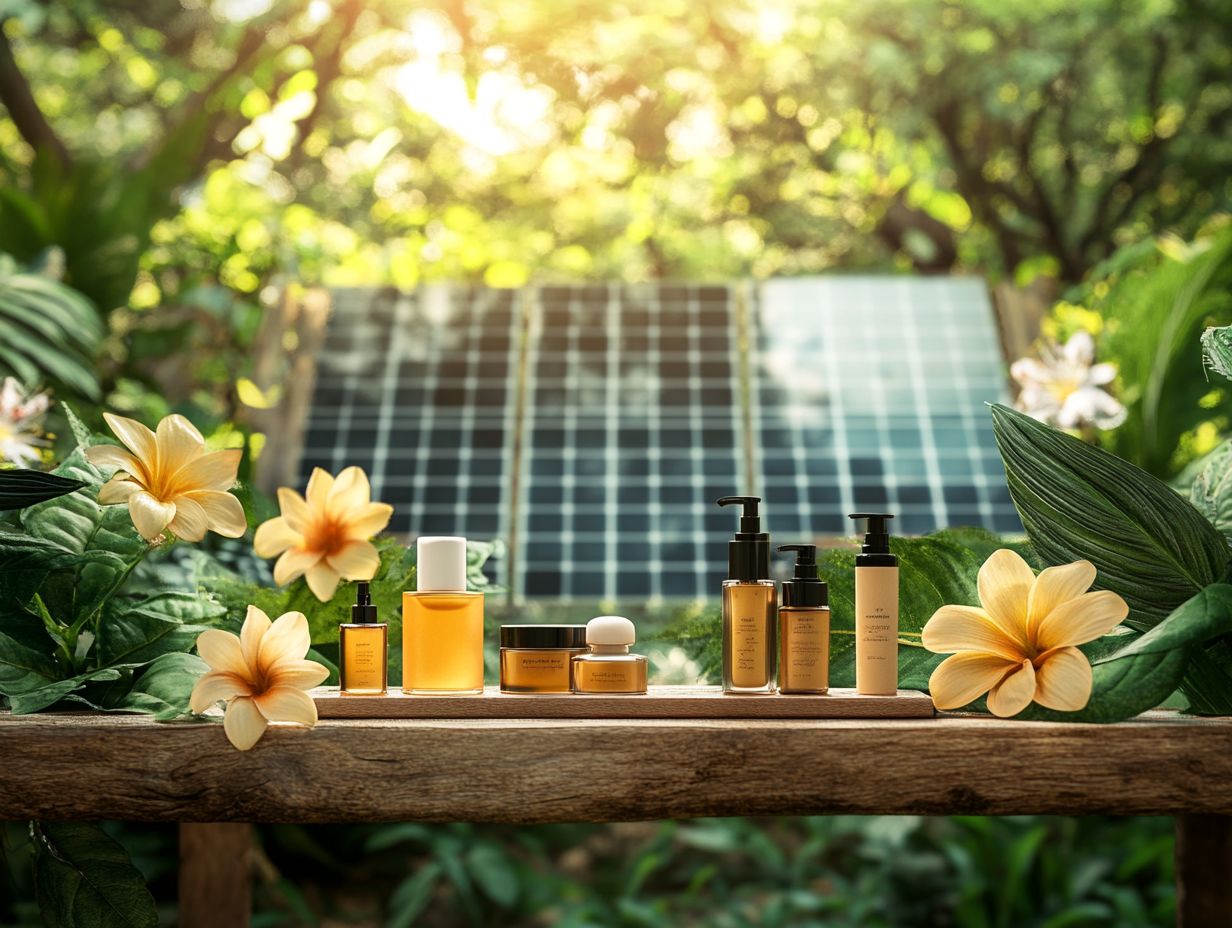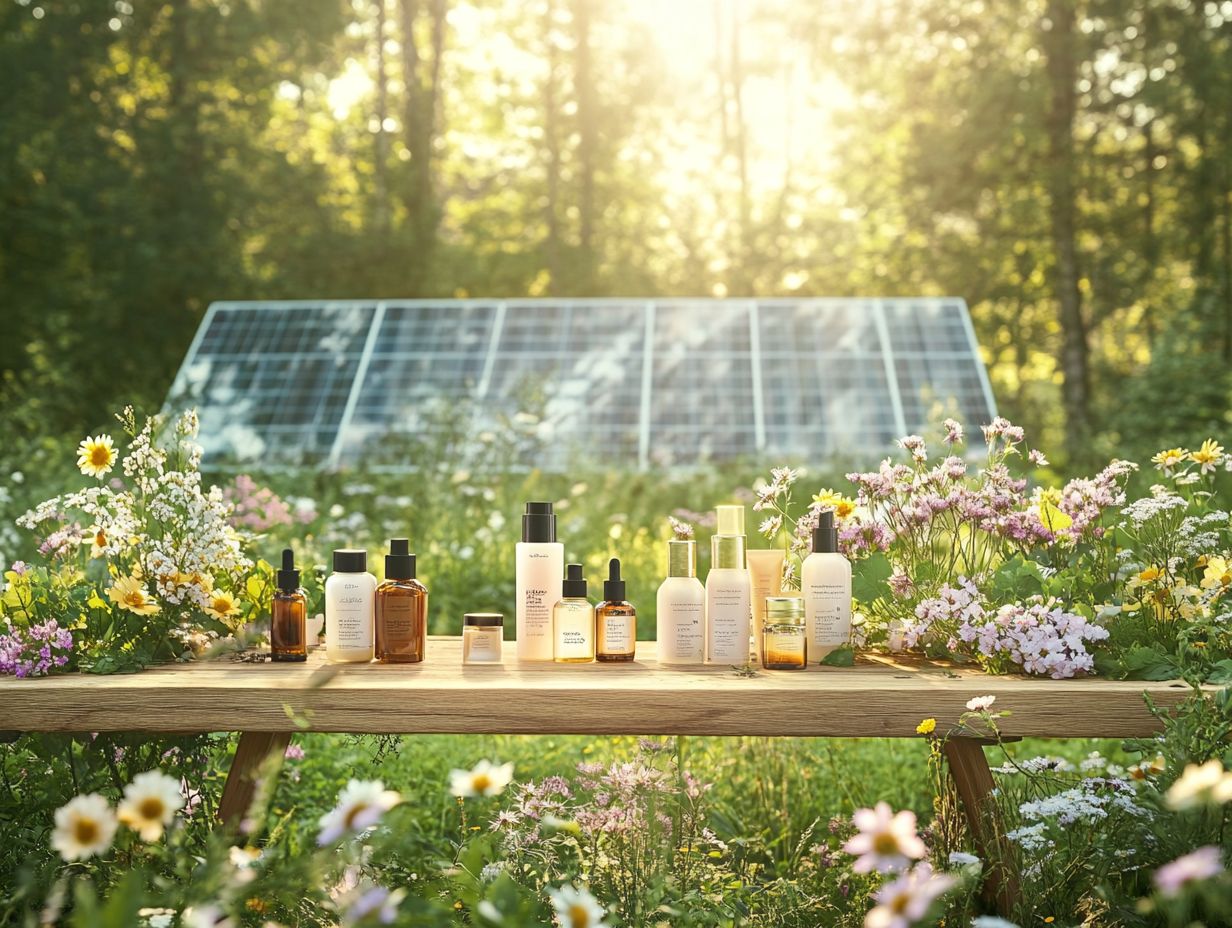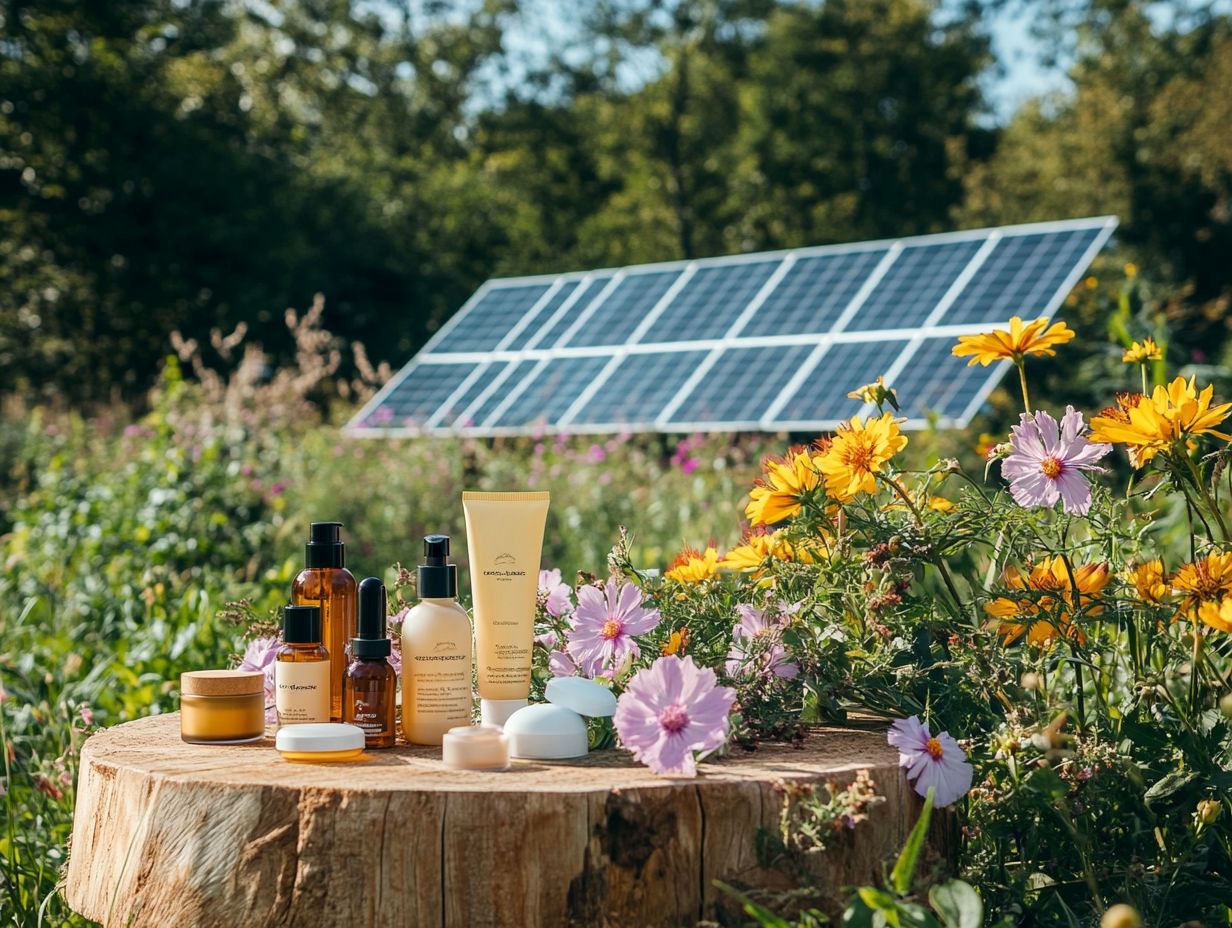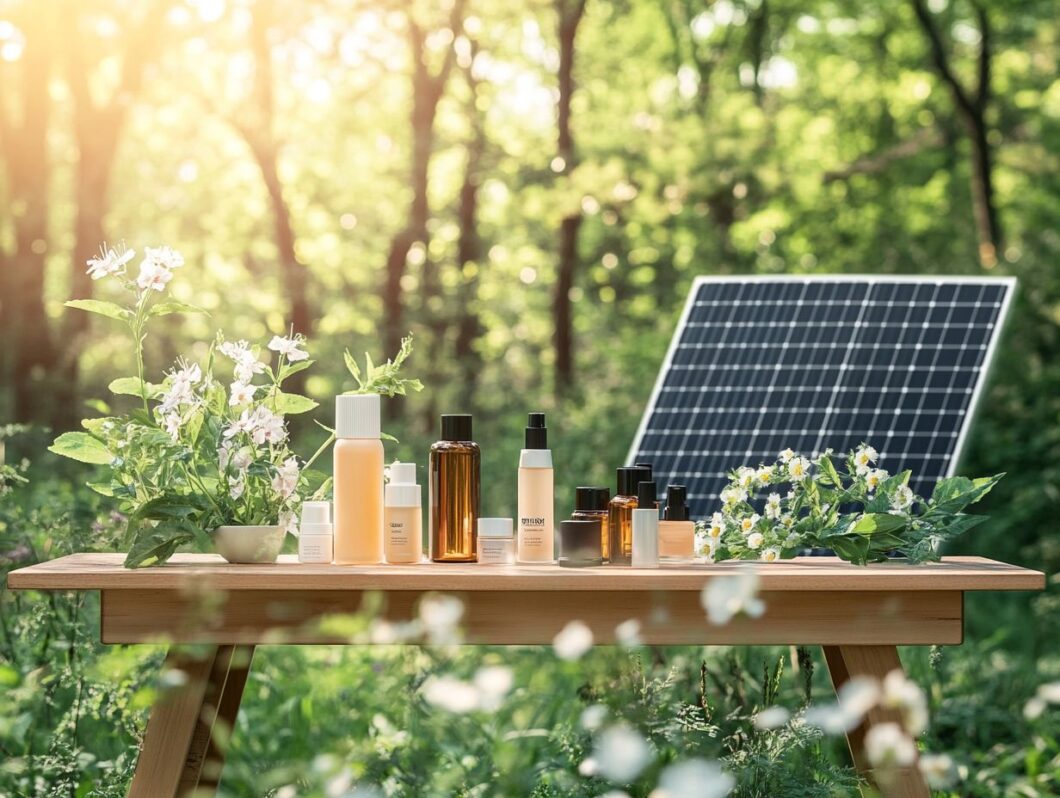The beauty industry, renowned for its creativity and self-expression, stands at a critical crossroads as it confronts its environmental impact.
With harmful production practices and unsustainable ingredients, this sector significantly contributes to climate change. However, a wave of transformation is underway. Brands are increasingly adopting sustainable practices, innovating eco-friendly packaging, and collaborating with environmental organizations.
As consumer demand for responsible beauty products continues to grow, the industry’s future depends on its commitment to sustainability. I am keen to explore how beauty brands are stepping up to address climate change and what this means for our planet.
Key Takeaways:
The Impact of the Beauty Industry on Climate Change

The beauty industry, a multi-billion dollar sector, significantly contributes to climate change, largely due to the carbon emissions linked to its production and supply chain practices.
As awareness of its environmental impact grows, I recognize that beauty brands are increasingly compelled to implement sustainability initiatives to reduce their carbon footprint and tackle greenhouse gas emissions.
Additionally, the rise of clean beauty has led companies to reevaluate their sourcing practices, placing greater emphasis on eco-friendly ingredients and sustainable packaging as essential components of their climate strategies.
Environmental Concerns and Statistics
The environmental concerns linked to the beauty industry are complex, particularly when it comes to packaging waste, carbon emissions, and the overall lifecycle of beauty products.
Recent statistics reveal that the beauty sector produces an astonishing 120 billion units of packaging each year, a figure that significantly contributes to plastic waste. Alarmingly, only about 9% of plastic waste is ever recycled, highlighting a considerable gap between consumer intentions and actual behaviors.
The carbon footprint of the beauty industry is also noteworthy, with estimates suggesting it accounts for approximately 3% of global greenhouse gas emissions.
This substantial impact necessitates a thorough examination of current recycling rates and emphasizes the urgent need for improved waste management practices that foster enhanced recycling infrastructure and consumer awareness. A transition towards sustainable materials and practices could play a crucial role in reversing these detrimental trends, ultimately benefiting both the environment and the industry itself.
Sustainable Practices in the Beauty Industry
I have observed that sustainable practices in the beauty industry are gaining significant traction as brands work diligently to reduce their environmental impact and promote natural beauty.
This concept of natural beauty is increasingly being defined by the incorporation of renewable energy and regenerative agriculture in product development.
Efforts to Reduce Carbon Footprint

I have observed that beauty brands are increasingly focusing on reducing their carbon footprint through targeted sustainability initiatives and improvements in energy efficiency.
For instance, several leading companies are now utilizing advanced emissions tracking software to monitor greenhouse gas emissions across their supply chains. This technology enables me to identify key areas for improvement while fostering transparency, allowing consumers to gain insight into the environmental impact of their purchases.
Additionally, brands are exploring innovative packaging solutions, such as biodegradable or refillable options, which significantly reduce waste.
By integrating these practices, I recognize that beauty brands are not only contributing to a healthier planet but also cultivating a more sustainable image that resonates with eco-conscious consumers.
Use of Sustainable Ingredients
The shift towards using sustainable ingredients in beauty products represents a significant trend that I have observed, with brands increasingly prioritizing organic ingredients and responsible sourcing practices. This movement highlights a growing awareness among consumers regarding the impact of their choices on both the environment and their personal health.
By opting for organic and sustainably sourced components, brands not only align with eco-conscious values but also address the increasing demand for transparency in the product development process.
Certifications such as COSMOS and NATRUE are pivotal in this landscape, as they provide a guarantee of adherence to high environmental and ethical standards. With these endorsements, consumers can have confidence that the products they select are genuinely sustainable, thereby enhancing the brand’s reputation and fostering long-term loyalty among discerning buyers.
Innovations in Packaging
I am focused on innovations in packaging within the beauty industry, emphasizing the development of more sustainable options.
This includes the use of biodegradable and recyclable materials, which aim to minimize packaging waste and enhance overall packaging optimization.
Biodegradable and Recyclable Options

The development of biodegradable and recyclable packaging options has become a central focus for my beauty brand as I strive to enhance waste management practices and strengthen our sustainability claims.
I am actively exploring materials such as plant-based plastics, post-consumer recycled materials, and compostable containers to reduce our reliance on traditional petroleum-based packaging. These innovations not only minimize our environmental impact but also resonate with the growing number of eco-conscious consumers.
By transitioning to these alternative packaging solutions, my brand can significantly decrease its carbon footprint and promote a circular economy, where resources are reused and recycled rather than discarded.
As the beauty industry evolves, integrating sustainable packaging options is enabling me to adopt a more responsible approach to consumption and waste.
Collaborations with Environmental Organizations
Collaborations between beauty brands and environmental organizations play a crucial role in advancing climate action and improving sustainability initiatives within the beauty industry.
Partnerships for Positive Change
I believe that partnerships forged for positive change are essential for amplifying the impact of sustainability initiatives within the beauty industry, especially regarding climate action.
I have observed notable collaborations, such as those between prominent cosmetic brands and environmental NGOs. For instance, a major skincare manufacturer has partnered with the Rainforest Alliance to focus on the sustainable sourcing of ingredients. These alliances not only highlight ecological responsibility but also contribute significantly to the preservation of biodiversity.
I recognize that beauty companies are increasingly engaging consumers in their sustainability efforts. By promoting eco-friendly purchasing habits, educating users about the importance of supporting brands with ethical practices, and advocating for refillable packaging, these brands can effectively influence consumer choices.
This symbiotic relationship fosters a community dedicated to making environmentally responsible decisions, ultimately leading to measurable outcomes for both the industry and the planet.
Consumer Demand for Sustainable Beauty Products

The increasing consumer demand for sustainable beauty products reflects a significant shift towards conscious consumerism.
This trend is driven by heightened awareness of environmental concerns and a growing preference for eco-friendly alternatives.
The Rise of Conscious Consumerism
I have observed that conscious consumerism is on the rise, with shoppers increasingly prioritizing brands that reflect their values concerning environmental issues and sustainability initiatives.
This shift in mindset is significantly transforming the beauty industry. Consumers now seek more than just high-quality products; they expect transparency and ethical practices throughout a brand’s operations.
The influence of informed shoppers has prompted companies to reevaluate their sourcing strategies, ensuring that ingredients are not only safe but also sustainably harvested.
Brands are now compelled to openly share their production processes, give the power toing consumers to make informed decisions that align with their commitment to environmental stewardship.
As a result, the beauty sector is experiencing an evolution where innovative solutions and sustainable packaging are becoming the standard, ultimately benefiting both the planet and the discerning shopper.
Future Outlook for the Beauty Industry and Climate Change
My perspective on the future of the beauty industry in the context of climate change is focused on ambitious sustainability goals. This includes striving for carbon neutrality and improving overall environmental performance.
Predictions and Goals for Sustainability
Predictions for sustainability in the beauty industry indicate that there will be an increasing focus on tangible goals and climate strategies aimed at reducing carbon emissions and promoting environmental stewardship.
As brands make more commitments to measurable targets, such as achieving net-zero emissions by 2030 or adopting sustainable sourcing practices, I see the entire landscape poised for significant transformation.
Major players are not only implementing eco-friendly packaging solutions but are also prioritizing clean ingredient sourcing, reflecting a growing awareness among consumers regarding product origins. These initiatives resonate deeply and are likely to shape industry standards while elevating consumer expectations for transparency and ethical practices.
In the coming years, I anticipate that these commitments will drive a substantial shift, inspiring smaller brands to follow suit and fostering a collective consciousness about sustainability within the beauty sector.


